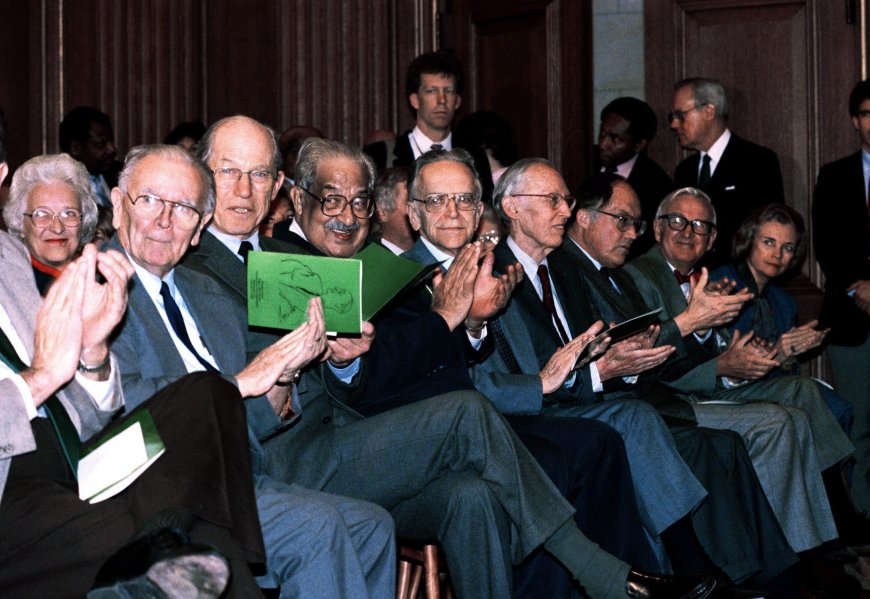Three Justices and a Fatal Mistake


Although little noticed amid our current crises, this is a profoundly important moment for the death penalty—an inflection point with striking dichotomies.
Joe Biden commuted the death sentences of 37 of 40 inmates on federal death row. By contrast, Donald Trump issued an order on his first day urging aggressive expansion of capital punishment, and his attorney general issued an implementing directive.
Eleven states, including Virginia, Colorado, and New Hampshire, have abandoned capital punishment in recent years, with actual executions confined to a small group of pro-death jurisdictions. But a handful of states, including Florida under Governor Ron DeSantis, now seek to increase its scope and frequency dramatically.
Since 1972, an astonishing number of people convicted of capital crimes and sentenced to death—two hundred—have been exonerated. Despite this, the Supreme Court’s conservative supermajority remains extraordinarily hostile to individuals facing death sentences, including those raising innocence claims.
Polls show a marked decline in support for capital punishment over the past three decades. But a slight majority (53 percent) continues to favor it.
As we face this crossroad, it is striking that three Justices whose votes allowed the death penalty to be revived in 1976—Lewis Powell, Harry Blackmun, and John Paul Stevens—came to regret and disavow their votes. In contrast to their 1976 votes permitting the death penalty, they eventually concluded that the death penalty is fundamentally and irremediably flawed in our constitutional system. There is much to learn from their journeys.
Our current death penalty regime dates to the 1970s. In 1972, by a 5-4 vote in Furman v. Georgia, the Supreme Court struck down all death penalty laws. Justice Potter Stewart famously stated that the standardless and random death sentences at that time were “cruel and unusual in the same way that being struck by lightning is cruel and unusual”—and thus violated the Eighth Amendment, which prohibits “cruel and unusual punishments.”
When the Court decided Furman, the death penalty was in decline. Not a single person had been executed in the United States in the previous five years.
Two of the five Justices in the Furman majority (Stewart and Byron White) emphasized their view that the death penalty could be constitutional if states limited its use to the most culpable defendants—the worst of the worst. In a dissent for four Justices, Chief Justice Warren Burger stressed this point and urged the enactment of new death penalty laws.
A pro-death penalty firestorm swept the states. Thirty-five states passed revised capital punishment statutes. In 1976, the Court reviewed the new laws in a series of decisions under the lead case of Gregg v. Georgia.
Launching the modern death-penalty era, the Supreme Court approved laws with a two-stage death-penalty process—the first for guilt or innocence and the second for life or death, with jury consideration of aggravating circumstances and mitigating factors. Laws imposing a mandatory death sentence for certain crimes, on the other hand, were found unconstitutional because they did not allow individualized determinations.
The Gregg cases split the Court into three camps—abolitionists, enthusiasts, and a floating middle. The abolitionists—William Brennan and Thurgood Marshall—found the death penalty inherently unconstitutional and rejected all of the new laws. At the other end, the enthusiasts-Burger, White, Blackmun, and William Rehnquist–voted to uphold all the laws. And the floating middle—Powell, Stevens, and Stewart—cast the deciding votes. They upheld some laws by joining the enthusiasts and struck down others by joining the abolitionists.
With the floating middle in control, the 1976 decisions gave the green light to death sentences if they complied with the two-phase procedure and adhered to safeguards. Since those fateful rulings, more than 1600 people in the United States have been killed by state governments. Another two thousand people have been sentenced to die and await their execution while languishing in harsh conditions on death row.
If the three Justices who later found the death penalty unacceptable—Powell, Blackmun, and Stevens—had voted against the death penalty in 1976, their votes, with abolitionists Brennan and Marshall, would have prevented the restoration of the death penalty and eliminated it nearly 50 years ago.
Lewis Powell
When Richard Nixon appointed him to the Court in 1971, the courtly Powell was viewed as a conservative southern Democrat—a prominent Richmond lawyer, scion of an old Virginia family, and former American Bar Association president. Powell emerged in his 15 years on the Court as a nuanced and occasionally quirky centrist, swinging between the Court’s conservative and liberal blocs and sometimes charting his own idiosyncratic path that did not fit neatly with either bloc.
In Furman v. Georgia, decided in Powell’s first year as a Justice, he dissented from the Court’s ruling that struck down all death penalty laws. Powell blasted the anti-death penalty decision as “shattering” bedrock principles of federalism, separation of powers, judicial restraint, and respect for precedent. But in 1976, he joined Stevens and Stewart in the floating middle, upholding some new laws and striking down others.
In subsequent years, Powell’s death penalty positions sometimes aligned with liberal Justices and sometimes with conservatives. On the liberal side, he wrote a 5-4 opinion (Booth v. Maryland) that banned “victim impact statements” in death sentence proceedings because they were too prejudicial and lacked sufficient relevance (a decision the Court’s conservatives overruled after Powell retired). But, joined by the Court’s conservatives, Powell wrote a momentous 5-4 opinion protecting the death penalty. It rejected the constitutional significance of evidence that death sentences were deployed far more frequently when the victim was white (McCleskey v. Kemp). Throughout his Court tenure, Powell expressed the view that capital punishment was permissible if it had sufficient safeguards.
Four years after he left the bench in 1987, Powell emphatically rejected the death penalty. Based on his experience, he found the death penalty impossible to administer, unacceptable, and unconstitutional. In a stunning development, Powell told his biographer John Jeffries that he should have voted against the death penalty in every capital case—including Furman v. Georgia and McCleskey v. Kemp (the decision he authored rejecting racial discrimination claims). The death penalty “serves no useful purpose,” Powell explained, including deterrence.
“I have come to think that capital punishment should be abolished.”
Harry Blackmun
In 1970, Harry Blackmun was Nixon’s third choice for a Supreme Court vacancy. After the first two nominees failed to win approval, the Senate confirmed Blackmun unanimously.
Court watchers initially pegged Blackmun as a staunch conservative. He had grown up in St. Paul, Minnesota, with conservative Chief Justice (and fellow Nixon appointee) Warren Burger and had even served as the best man at Burger’s wedding. Burger and Blackmun were quickly dubbed the “Minnesota Twins.” Supreme Court clerks derided Blackmun as “Hip pocket Harry”—Burger’s second vote. But in his 24 years on the High Court, Blackmun became estranged from Burger, both personally and judicially, as a result of Burger’s imperiousness and Blackmun’s jurisprudential journey. Blackmun migrated to the Court’s left, frequently joining liberals on various issues.
At first, Blackmun was strongly pro-death penalty as a constitutional matter (even while expressing concern about capital punishment as a personal matter). He joined Burger in dissenting from Furman’s invalidation of death penalty laws and seeking to uphold all of the new laws in the Gregg cases.
But Blackmun eventually became deeply concerned about capital punishment. For example, he dissented at length from Powell’s McCleskey decision. For Blackmun, its proof of discrimination—establishing that a Black defendant in Georgia was 22 times more likely to receive the death penalty when the victim was white—revealed a risk “so acute that it violates the Eighth Amendment.”
In his final year on the Court in 1994, Blackmun rejected the death penalty. He concluded it was “fraught with arbitrariness, discrimination, caprice and mistake.” “From this day forward,” he proclaimed, “I no longer shall tinker with the machinery of death.” No “combination of procedural or substantive regulations ever can save the death penalty from its inherent constitutional deficiencies.”
Like Powell, he came to regret his vote favoring the death penalty in Furman, concluding that the Justices rejecting the death penalty had been “correct.”
John Paul Stevens
When Gerald Ford nominated Stevens to the Supreme Court in 1975, Stevens was hailed as a “judge’s judge”—an independent jurist known for his fairness and intellect. Raised in Chicago, Stevens was a child of both privilege and tragedy. His family owned the glitzy Stevens Hotel, which brought him in contact with celebrities from Amelia Earhart to Charles Lindbergh, and, as a 12-year-old boy, he witnessed Babe Ruth’s famous “called shot” in the 1932 World Series. But, in the maelstrom of the Depression, Stevens’ father was convicted of embezzlement—flimsy charges later emphatically overturned on appeal. Stevens’ uncle and grandfather also had been charged, but his uncle committed suicide after the charges were filed, and his grandfather suffered a debilitating stroke. The bow-tie-wearing Justice later emphasized that this “firsthand knowledge of the criminal justice system’s fallibility” left a lasting impression. He served on the Court for 34 years, the third-longest tenure of any Justice.
In Stevens’s first term, in the Gregg v. Georgia cases, he joined Powell and Stewart in the death penalty’s floating middle. In succeeding decades, Stevens continued his quest for safeguards to ensure rationality in the death penalty. For example, he wrote a landmark opinion holding it unconstitutional to execute intellectually disabled individuals (Atkins v. Virginia). But he grew disenchanted with the Court’s simultaneous evisceration of essential protections and erection of procedural obstacles. He vehemently dissented in decisions ranging from the standard for excluding jurors who doubted the death penalty to the ability of a judge to reject a jury’s decision for life.
In 2008, near the end of his tenure, Stevens, like Powell and Blackmun, repudiated capital punishment. He concluded that the death penalty embodies “the pointless and needless extinction of life”—a “patently excessive and cruel and unusual punishment violative of the Eighth Amendment.” While he would apply the existing framework in light of controlling precedent, he had determined that the death penalty was always unconstitutional.
After leaving the Court in 2010, Stevens continued in the same vein. In a 2014 book arguing for new constitutional amendments, Stevens highlighted banning the death penalty as an urgently needed constitutional reform. In his 2019 memoir, he stressed the many exonerations of death row inmates. It was a development, he emphasized, that no Justice had contemplated “when the Court reviewed the constitutionality of the death penalty at length in 1976,” and the danger of executing the innocent was “a risk that no civilized society should tolerate.”
Had Powell, Blackmun, and Stevens come to their anti-death-penalty position in 1976, the death penalty might not have ever returned. Notably, European countries and the United Kingdom abandoned the death penalty in the second half of the twentieth century and, after abandonment, never brought it back. If the Supreme Court trio had voted against re-allowing the death penalty in 1976, permitting American governments to kill individuals likewise might well never have re-emerged.
Justice Felix Frankfurter once said, “Wisdom too often never comes, and so one ought not to reject it merely because it comes late.” The hard-won wisdom of Justices Powell, Blackmun, and Stevens—and their trajectories—has much to teach us after 50 years of a failed experiment with the modern death penalty.










































